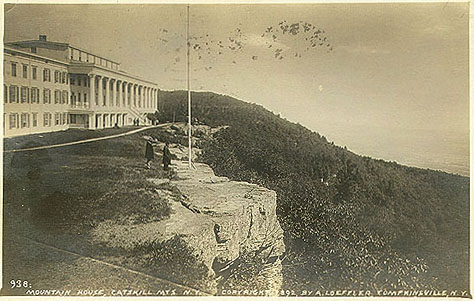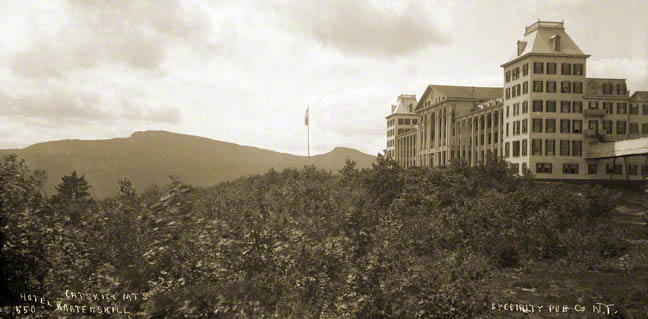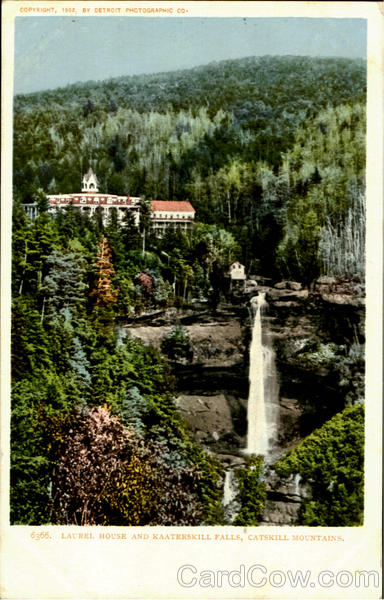Summer Slackoff: Ultralight Hiking 2014
August 24, 2014
I like multiday hiking, or multiday wilderness travel trips of any sort. Alas, although I have done canoe, raft and winter touring trips in the past, playing with boats or skis is a bit too much for me these days, so I focus on simple walking. There’s something special about it — the reality of being in nature, for an extended time, without our sadly flawed bits of civilization such as cars, money, (bad) architecture, and so forth. Nothing else is really like that. I intentionally plan for a bit of enforced quietude these days, with literally nothing but my own mind for company, not even a book. It typically takes a few days for my mind to settle down, which is sort of the point. I even, sometimes, achieve a brief state of boredom.
This year, I did a bit of the Long Path through the Catskills, from Phoenicia to Windham. This is about 60 miles, and I gave it six days, with the first and last more like half-days. This is not a difficult pace, and leaves a lot of time for long lazy afternoons. I like to be a bit less goal-oriented, and when I come to a nice spot, like Wildcat Falls outside of Palenville, I might stay there for an unplanned 60 or 90 minute interlude. The combination of about four to six hours a day of hiking, and a lot of free time otherwise, is better than having all of one or the other. Oddly enough, despite living for well over ten years within the broad New York City sort of area, I was not all that aware of the potential of the Catskills for multi-day hiking of this sort. The trails there don’t make convenient loops, and many trails don’t connect well together, but have gaps of road walking. However, there is a lot of bus access to major start/end points, which allows easy point-to-point trips. The Catskills are not real high, with most everything but the highest peaks below 4000 feet. Most traveling hikers like the big peaks, or big canyons or big … something, to inspire the imagination. But, the Catskill trails are actually quite rough in spots, particularly the ridge over Indian Head (rather dramatically called the “Devil’s Path”), and thus the hiking is rather challenging and slow. All in all, the Catskills are woefully underused and under-appreciated by the millions living in the New York City area, even including me, which tells you something.
I’ve found, over time, that nature is sort of the same everywhere. Whether the Grand Canyon in the Arizona desert, or central Alaska, or a Hawaiian beach on the Kalalau coast, these are all aspects of my old friend The Earth, with a similar underlying quality, and I can get the same sort of pleasure from each. This is good, because it means you don’t really have to travel that much.
The Catskills used to occupy a larger space in people’s imagination. I passed by the location of the Catskills Mountain House, on the cliffs overlooking the Hudson Valley next to North-South Lake. It was built in 1823! This became “a premiere attraction for the country’s elite, a sort of Hamptons of its day where politicians (including some presidents), captains of industry, artists, poets and writers would rub shoulders, admire the view, take walks in the adjacent forests by day and excellent dinners by night,” according to Wikipedia.
http://en.wikipedia.org/wiki/North–South_Lake
http://en.wikipedia.org/wiki/Catskill_Mountain_House
http://www.catskillarchive.com/mtnhouse/

Eventually, the Adirondacks became the favorite playground of the wealthy, and the Catskills Mountain House fell into decline. Its last season of operation was 1941.
But before then, an even grander hotel opened on the same North-South Lake plateau, the Hotel Kaaterskill. It is hard to even conceive of such an extraordinary building today, both in its size and ambition and, also, the beauty and craftsmanship of its execution. This isn’t some Atlantic City monstrosity or Vegas parking garage for tourists. It was built in 1881, and alas burned to the ground in 1924 due to an accident while an employee was making soap. Consider that such things existed long before electricity, automobiles, asphalt paved roads, and plastics.
http://catskillarchive.com/kaaterskill/index.htm

Beginning in 1852, the smaller (but still quite grand especially after an 1881 expansion) hotel called the Laurel House was operated practically on top of the dramatic Kaaterskill Falls.
http://catskillarchive.com/laurel/index.htm

Laurel House And Kaaterskill Falls Catskills, NY
Today, the Catskills seem best appreciated by Korean hikers and also Orthodox Jewish groups. Oddly enough, their traditional Orthodox clothing, which was probably intended to be very austere, today renders them the best-dressed among Catskills visitors. The way people dress in their free time today appalls even me, and I live in this country.
There is at least one great Grand Hotel in the mountains outside of New York City, the Mohonk Mountain House, which is actually in the Shawangunk area, not the Catskills proper. After a recent renovation, it was actually named the “Number One Resort Spa in the United States” by Conde Nast Traveler magazine. Of course it is expensive, but, I think, not so expensive for that sort of thing. It was built in 1869.

Another still-extant example of the grand days of 19th century mountain architecture is the Great Camp Sagamore in the Adirondacks, which was originally a private residence — one of the most extraordinary examples of the “Great Camps” of the superwealthy of that time. It was owned by the Vanderbilts for a long time. Now you can stay there for a weekend.
http://www.greatcampsagamore.org
“It was like Brigadoon, the legendary village that appeared out of the mists only once every seven years, just to disappear again. And the people who lived in the village aged just one year of seven. And everyone was happy all the time. That’s how I remember Sagamore.
We never called it a: ‘Great Camp.’ Usually, we just said: ‘camp,’ or ‘Sagamore.’ “Are you coming up to camp? We hope you will.”
My grandfather, the first Alfred Gwynne Vanderbilt, bought it from William West Durant, in 1901.”
Or, you could go to Sandals.
I think people should enjoy these things while they can. Nobody is building any new ones, and you never know when there might be a soap-making accident.
If anything, today I am beginning to feel a sort of attraction to what you might call “luxury backpacking.” I still find that a classic mountain lean-to or a nice rock shelf is about the most beautiful thing around these days, and it could perhaps be combined with something like gourmet cooking, wine and good conversation. Perhaps it would be like a sort of hyper-miniaturized version of what attracted urban New Yorkers to places like the Catskill Mountain House in the 1830s. Even when the buildings still exist, it is not quite the same with electricity, automobiles, air conditioning, and free wifi. I suppose the path of ultralight austerity, although I still rather like it, has become a bit too familiar. But, I would want to find some people to go with, and people who would be interested in such a thing are rather rare.
The Long Path is a funny sort of trail. It starts at the George Washington Bridge, just west of Manhattan. You might expect that it then goes through about twenty miles of New Jersey suburbs, but actually it follows the little-known Palisades Park along the Hudson, a lovely woods trail by the river. It then continues up through a variety of nice mountain ranges and ends, about 340 miles later, near Albany. Trails like this simplify the planning for long trips, as you can just pick a start point and an end point to your tastes.
http://www.nynjtc.org/region/long-path
I managed to find a sort of repose regarding gear on this trip. Everything worked great — so well that there isn’t really much reason to change any of it. Last year, I found that I wanted a lot more comfort, functionality and durability out of my gear, and was willing to compromise on weight to get that. This time, I had pretty much all the comfort, functionality, and durability that I could ever want for, but managed nevertheless to keep my base pack weight to a modest 6.5 pounds! What’s to complain about that.
Talking about gear is boring, but nevertheless you can perhaps learn from my experience there.
Pack: I used the Mountain Laurel Designs Newt pack, which is a simple sack made of durable Spectra-reinforced Dyneema fabric. This is burly stuff. Nevertheless, I managed to put a hole in it with my tent pole, which means that I have to be more careful about padding the tentpole ends in the future. This is a very small pack, only about 20 liters with no outside pockets. There’s a removable external bungee arrangement, which I removed. I also didn’t use the sternum strap, and didn’t miss it. I carried both the bungee and sternum strap in my pack for experimentation, but didn’t use either. There really isn’t much space in this pack, but I did manage to carry four days of food and two liters of water in it. I could manage a bit more, perhaps two more days of food or a stove/pot combo. With capacity for six days of food, that should get you from one resupply point to another, which means that you could do something like the Appalachian Trail with a pack like this.
Clothes: For the first time in a very long time, I abandoned my usual t-shirt/running shorts combo for a long-sleeve hiking shirt from Columbia, and long pants from Patagonia that I already owned. This was in reaction to my buggy hike last year. Plus, you should really have some protection from ticks these days. (I’ve actually had Lyme disease, which is incurable, but I cured it.) Coverage for the arms and legs also gives protection from abrasion from plants or rocks, protection from the sun, and keeps some dirt off. Also, they serve as rudimentary wind and weather protection on cooler days or above treeline, and give some warmth for camp. Thus, I was able to replace my windshirt/windpants combo as well. They are somewhat heavy, at 7oz for the shirt and 10oz for the pants, but they look good and can take a beating over multiple weeks of brushy hiking. This is not some featherweight windshirt that gets ripped to shreds in the first blowdown scramble. And, you can wear it even to a fairly nice restaurant, for those in-town days. The total weight penalty was about zero for replacing the t-shirt/windshirt combo with a hiking shirt, and about 7 oz. for replacing the shorts/windpants combo with some proper hiking pants. Not much really. And way better.
I took a runner’s fleece zip-t-neck, and some similar “expedition weight” fleece tights. This was more than was really needed, and thus a welcome luxury in camp and at night. Plus, some extra “sleep” socks. It’s nice to have a layer of fleece on you when sleeping, which also keeps the sleeping bag clean among other advantages.
Sleeping Gear: I kept the Rab Elite Top Bag, which is rated to 30F, but I wouldn’t use it below 40F. This was combined with the Therm-a-Rest NeoAir XLite full-length sleeping pad, a type of air mattress. The tapered, full length pad mated perfectly with the “top bag,” which has only a sort of mesh on the bottom. This new generation air mattress is from only the past couple years, and it is sort of super great compared to all the other typical options of the last three decades. Very, very comfortable, weighs only 12oz. in full length, and it packs down to nearly the size of a soda can. Plus, unlike past air mattresses which were never very warm, it supposedly has a bit of insulation value due to internal reflective coatings. It seems to be OK down to about 40F or so, good enough for summer use. It is made of rather light stuff, and durability could be an issue. The combo worked well and I slept very soundly. I also carried a fleece beanie plus an additional fleece balaclava for head insulation (and bug protection), since the Rab bag doesn’t have a hood. The NeoAir mattress is much heavier than my previous 4oz. foam pad, but it is worth every gram and more, and is also less bulky in the pack which allows more room for other stuff.
Shelter/Raingear: This year I used a ponchotarp again, a combo raingear and shelter solution. However, rather than the standard rectangular sheet, I used the Gatewood Cape from Six Moon Designs. This is really more like a small tarptent that can be used as a poncho. It is a fabulous one-person shelter, with space to sit up inside while also providing more protection than a typical 5×8 ponchotarp. It comes with a single pole, which I used. I slept in it for three nights, and had two nights in shelters. Unfortunately, I had great weather, and can’t say how well it works as either a shelter or poncho in the rain. It looks like about as good as it gets as a one-person tarp-shelter, but perhaps a bit flappy and kludgey as raingear. Nevertheless, I think I would prefer it in general to a simple ponchotarp, with a small weight penalty of about 4 oz. vs. the GoLite ponchotarp.
Food: More no-cook foods this time. I wanted to experiment with resupplying from local stores, and got a chance to resupply from the most difficult of options, a gas station convenience store in Palenville — and not a particularly nice one, either. I started with a combo of dried fruit, nuts and chocolate. I allowed myself greater leeway in no-cook foods later, but overall I decided that I actually rather like dried fruits and nuts, among no-cook options. My resupply was some whole-wheat bread, mustard and cheddar cheese to make cheese sandwiches, some raisins, and a half-gallon of orange juice. I also had a pound of sunflower seeds left from earlier, thus filling my nuts quota. Of course the orange juice was heavy, but I was going to be carrying water anyway so it sort of canceled out. I could have done a bunch of other things such as canned tuna or other canned fish and meats, cookies and candy bars, peanut butter and jelly, and perhaps things like deli meats, salami and other cheeses, if those options were available.
Shoes: Brooks Cascadia trail runners. Durable and very comfy. Worked great, unlike some other, lighter shoes I’ve worn which have blown out way too early. The big wedge of foam under the heel, which is problematic for running, was quite welcome for walking. +8oz per pair vs. some lighter options.
Little stuff: Aquamira. 2 liter water bladder, usually not filled completely. No headlamp on this one. Some duct tape for general 1st aid/foot care. Yes, I duct tape my body back together when needed. It’s better than band-aids, cotton medical tape, moleskin, or other blister options, and you could even use it to make splints or as butterfly bandages. OpSaks and bear hang gear. Silnylon stuff sacks. Lotsa ziploc bags.

